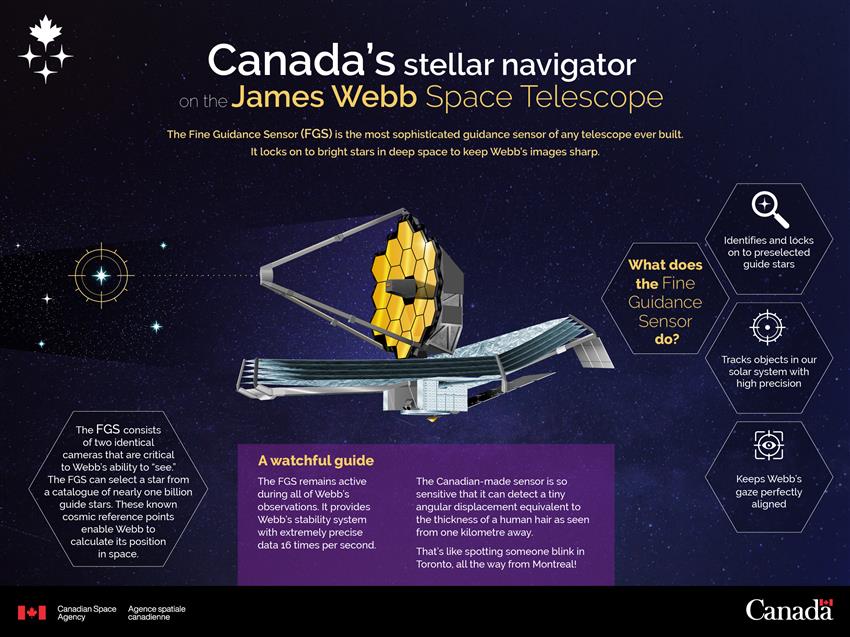Analyzing Deep Space
 |
| James Webb Space Telescope NASA |
"It's extremely satisfactory seeing everything coming into place. It's a sense of amazement and happiness.""[The sensor ... Fine Guidance Sensor ...] is mission critical. There was a lot of pressure on us. Everybody was very happy.""You would be able to point at a human hair [with the sensor] from a couple kilometres away. It's pretty much pushing the limit of what can be done.""I can't wait to see the data we'll get."Jean Dupuis, senior mission scientist, Canadian Space Agency
 |
| Canada's Fine Guidance Sensor (FGS) and the Near-Infrared Imager and Slitless Spectrograph (NIRISS) at NASA's Goddard Space Flight Center. (Credit: NASA) |
Canada is an integral part of the massive James Webb Space telescope functioning, joining with NASA with the ambitious to make this space exploration project operational, from the beginning. Up to half of the 600 scientists in the Canadian Astronomical Society are or have been involved with the project. Dozens of Canadian scientists and engineers are involved in the design team that produced vital Canadian technology used in the functioning of the telescope.
The systems meant to give direction to the telescope have been designed and built through the Canadian Space Agency.
The cost of the James Webb, launched in late December, designed to study the nature of planets beyond our solar system, and to enable study of what the oldest galaxies reveal about the birth of the universe, was $13 billion, and represents over two decades of work. Designed and builtt as the successor to the Hubble Space Telescope, the Webb is meant to orbit deeper into space -- about 15 million kilometres out -- with a sensitivity more than a hundred to a million times greater than its predecessor.
It is deemed to be sensitive enough through the newer technology with which it is outfitted to analyze exoplanetary atmospheres and to gather data from "First Light" galaxies, whose formation extends back 13.6 billion years. Without the installed Fine Guidance Sensor none of these ambitious prospects would be possible. Up and running, the sensor is used to align the telescope's 18 mirrors. It will probably take until summer for the sensor to cool down to below -200C to be fully operative.
Once that happens the sensor will function to aim the James Webb with a precision scarcely believable; down to a few milli-arcseconds. Operational and functional success appears to be the hallmark of the telescope and its launch. In December, NASA announced that the telescope had succeeded in slipping into its orbit so wonderfully well, the fuel savings could operate the telescope for significantly longer a period than the original ten-year lifespan foreseen.
As well as the sensor, another Canadian contribution is its Near-Infrared Imager and Slitless Spectograph, meant to assist in analyzing light observed by the telescope. As a result of Canadian involvement to the extent and degree that it has been, Canadian astronomers have a special entitlement to five percent of the observation time the telescope offers.
Canadian researchers plan to use the Webb telescope to study asteroids and comets close to Earth as well as the effect that stars have on the space around them in distant regions of the galaxy where new stars are born.

Labels: Analyzing Space Data, Astronomy, James Webb Space Telescope, NASA, Space Exploration

0 Comments:
Post a Comment
<< Home